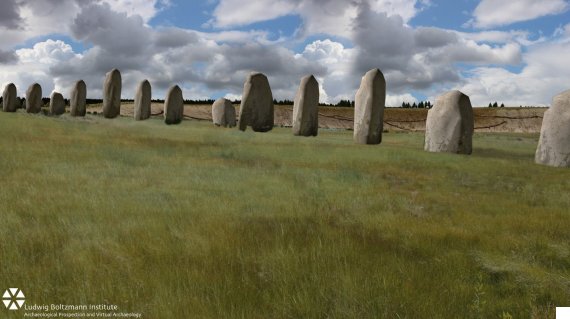Archaeologists Find ‘Superhenge’ Prehistoric Site Just Beside Stonehenge
The ongoing survey is using a suite of technologies to peer below the ground, including penetrating radar, electromagnetic induction, magnetometry, electrical resistance mapping, and lasers.
The area around Stonehenge is littered with prehistoric sights but the 90 or more stones, lying 3ft underground, have only just been discovered by sophisticated radar equipment towed by quadbikes.
“What we are starting to see is the largest surviving stone monument, preserved underneath a bank, that has ever been discovered in Britain and possibly in Europe”, said Vince Gaffney, an archaeologist at Bradford University who leads the Stonehenge Hidden Landscape project.
Researchers said finding the stones was “fantastically lucky”.
Although 90 stones have been located so far, there may be more underneath the earth.
Initially – some time in the first half of the third millennium BC and potentially before the main phase of Stonehenge was built in c2600BC – a huge probably horseshoe-shaped temple was established near what is now the village of Durrington, in Wiltshire.
The remains of the stone monument are buried under a thick, grassy bank and are thought to have been hauled into position more than 4,500 years ago.
Experts believe the stones, which may have been thought to have magical properties, were not originally part of the henge but were deliberately toppled before being incorporated into it. We’ve never seen anything like this in the world.
“We’re looking at one of the largest stone monuments in Europe and it’s been under our noses for something like 4,000 years”.
“Not only does the new evidence demonstrate a completely unexpected phase of monumental architecture at one of the greatest ceremonial sites in prehistoric Europe, the new stone row could well be contemporary with the famous Stonehenge sarsen circle or even earlier”.
None of the stones have yet been excavated but it is expected they will match the sandstones used to build Stonehenge. “These things are theatrical… created to impress”. However, the horseshoe temple’s northern perimeter appears not to have been marked by standing stones – but instead by a curved ridge of naturally high ground (defining the western and northern edge of the site) which had been artificially steepened at some stage, potentially when the stones were erected.
“The burying of the stones in Neolithic times nearly certainly represented significant social and ritual change”, he said.
REUTERS At the same event previous year, the Hidden Landscapes study revealed a host of archaeological features around Stonehenge.
Dr Nick Snashall, National Trust archaeologist for the Avebury and Stonehenge World Heritage Site, said: “The Stonehenge landscape has been studied by antiquaries and archaeologists for centuries”.
“But the work of the Hidden Landscapes team is revealing previously unsuspected twists in its age-old tale”.








